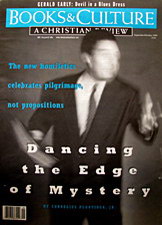The relationship between westerners and their environment has been defined by conflicting images of what land is for and what it means to those who depend upon it. By degrees, a Promised Land to be possessed, a wasteland to be improved upon, and a reserve of raw materials to be exploited, the West has long played a central role in the shaping of the “American Dream,” a dream that some argue is dissipating.
To encourage new thinking about the relationship between westerners and their region, a conference was sponsored in 1993 by the Arizona Humanities Council. Reopening the American West, edited by Hal K. Rothman, is a collection of papers presented at that conference by ten writers in western and environmental history. A similar, though more narrowly focused collection, The Atomic West, edited by Bruce Hevly and John M. Findlay, grew out of a symposium sponsored by the Center for the Study of the Pacific Northwest at the University of Washington, the chief aim of which was to consider the immense impact of federal dollars and atomic energy programs upon the postwar development of the West.
In Rothman’s text, the West is portrayed as a region deeply afflicted by the loss of local communities in which men and women were closely attuned to their environment and by the advent of the profit-driven exploitation of resources. In his chapter titled “Environmentalism and Multiculturalism,” Dan Flores wonders “how much of real importance [has been] sacrificed” in the West, where “information about living simply on the American land” has, in his view, given way to forgetfulness and consumption for its own sake. With considerably more stridency, Mike Davis presents what he regards as the ultimate geographical consequence of consumption as a lifestyle. “Las Vegas is the terminus of western history,” he writes, “the end of the trail.” That self-centered city has no real identity, Davis maintains; it exists merely to help consumers consume and spenders spend.
In a similar vein, but with a historical bent, Margaret Schaffer’s “Negotiating National Identity: Western Tourism and ‘See America First’ ” traces the commodification of scenic wonders in service to nation building. Through the various incarnations of the See America First campaign of the early twentieth century, tourists were presented with what Schaffer sees as a packaged myth of idealized America and proof of the triumphs of Anglo-Americans over the frontier and its peoples.
A very different image of the West was projected by proponents of nuclear energy: that of an essentially empty and undeveloped land, which could be “sacrificed” to the needs of national security and prosperity. Contributors to The Atomic West maintain that, between the mid-1940s and mid-1970s, many westerners, eager for the government money and consequent economic prosperity atomic programs would bring, were inclined to agree with this view. In “The University of California, the Federal Weapons Labs, and the Founding of the Atomic West,” Gregg Herken observes that westerners know ledge able of the U.S. military’s wealth envisioned a flow of federal largesse that—given the momentum of the postwar boom—would propel the West to national preeminence. Ernest Lawrence, physicist and Nobel Prize winner, saw in atomic energy programs “an inexhaustible cornucopia of government funding” with which he could draw the finest minds in physics to California.
And yet, as far as atomic energy was concerned, the West was never quite empty enough. In the final and most interesting section of The Atomic West, the growing concerns about atomic power in the 1960s and ’70s are discussed, as are the widely differing and regionally distinctive strategies of opposition to atomic programs. Here we read, for example, that the voter initiatives in California against nuclear power plants in the early 1970s were intended as vehicles for a broader, often radical, political agenda of social transformation, while in “Air Force, Western Shoshone, and Mormon Rhetoric of Place and the MX Conflict,” Matthew Glass ex plains how members of the Mormon church and Western Shoshone tribe drew upon a deep sense of place to defeat the basing of MX missiles in Nevada and Utah. The Mormons and Shoshones’ fundamental linkage of land and identity proved successful in turning back the process of ever-greater nuclear exploitation and expansion in the West.
While The Atomic West documents historical solutions to historical problems, some contributors to Reopening the American West propose new approaches. Char Miller’s witty “Tapping the Rockies” points to the work and legacy of conservationist Gifford Pinchot as perhaps having some pertinence today, while Helen Ingram suggests that the answer is to “Place Humanists at the Headgates.” Asserting that engineers and politicians lack the vision to solve equitably issues such as water re source allocation, she calls upon historians and creative writers “to take their rightful role as leaders of the discussion.”
Somewhere between Ingram’s Utopia and Mike Davis’s Dystopia, most westerners are getting on with their lives—too busy, they would no doubt say, to be bothered with the products of academic symposia. May be a good dose of their own history is exactly what they need.
Charles Palmer is presently cowriting, with Preston Jones, a history of San Bernardino, California, since World War II.
Copyright © 1999 by the author or Christianity Today/Books & Culture Magazine. Click here for reprint information on Books & Culture.









